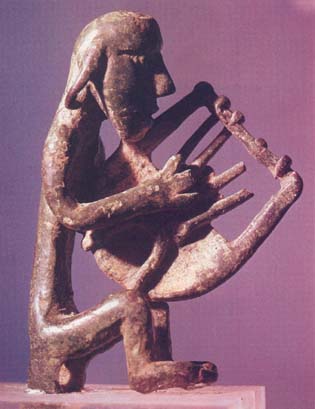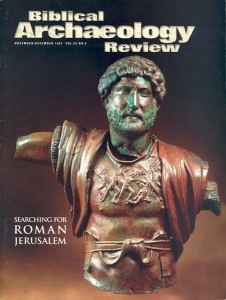Herakleion, Crete


Captured in mid-song, this bronze bard from Crete leans slightly forward to strum his lyre. Though the statuette, which measures only a few inches tall, dates to the end of the Geometric period of Greek art (900–700 B.C.), its artistic roots can be traced to about eight centuries earlier, when Minoan art flourished not only on the island of Crete, but also on the Greek mainland, ruled by the powerful Mycenean empire.
Beginning in the early 16th century B.C., the Minoans began fashioning bronze figurines. Most of them were devotional, depicting men and women in prayer. Others celebrated athletic heroes—boxers, wrestlers and bullfighters—whose muscled bodies were sculpted in lean, taut lines.
But the golden age of Minoan and Mycenean art ended following the invasion of the Greek-speaking Dorians, who conquered nearly all of Greece around 1200 B.C. Compared to the aesthetically conscious people they subdued, the Dorians were cultural Neanderthals, and under their rule Greece plunged into its Dark Age. More than two centuries would pass before artistic light—in the form of Homer’s epic poems and the sculpture of the new Geometric age—finally illuminated a darkened cultural landscape.
Already a library member? Log in here.
Institution user? Log in with your IP address.

